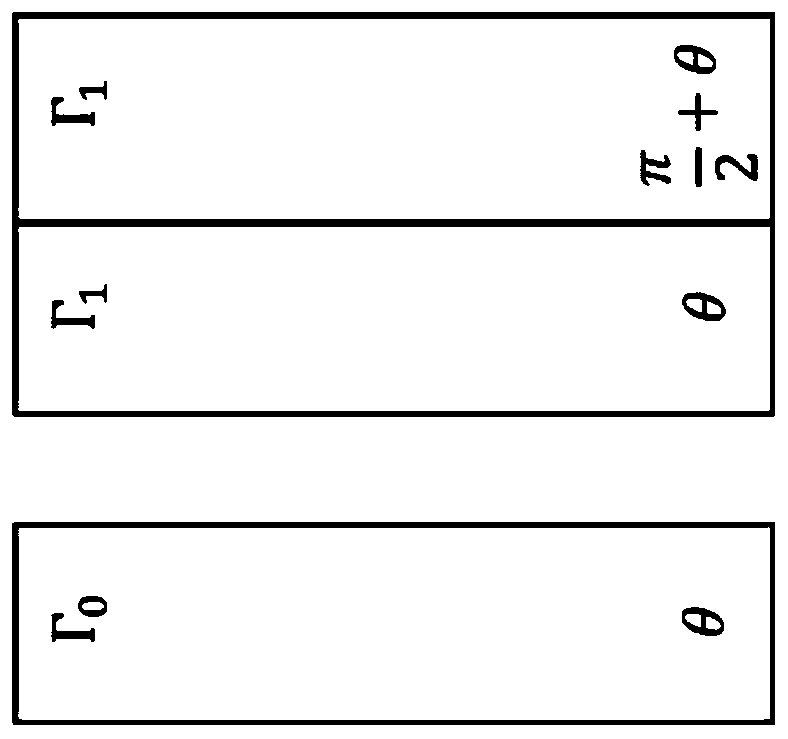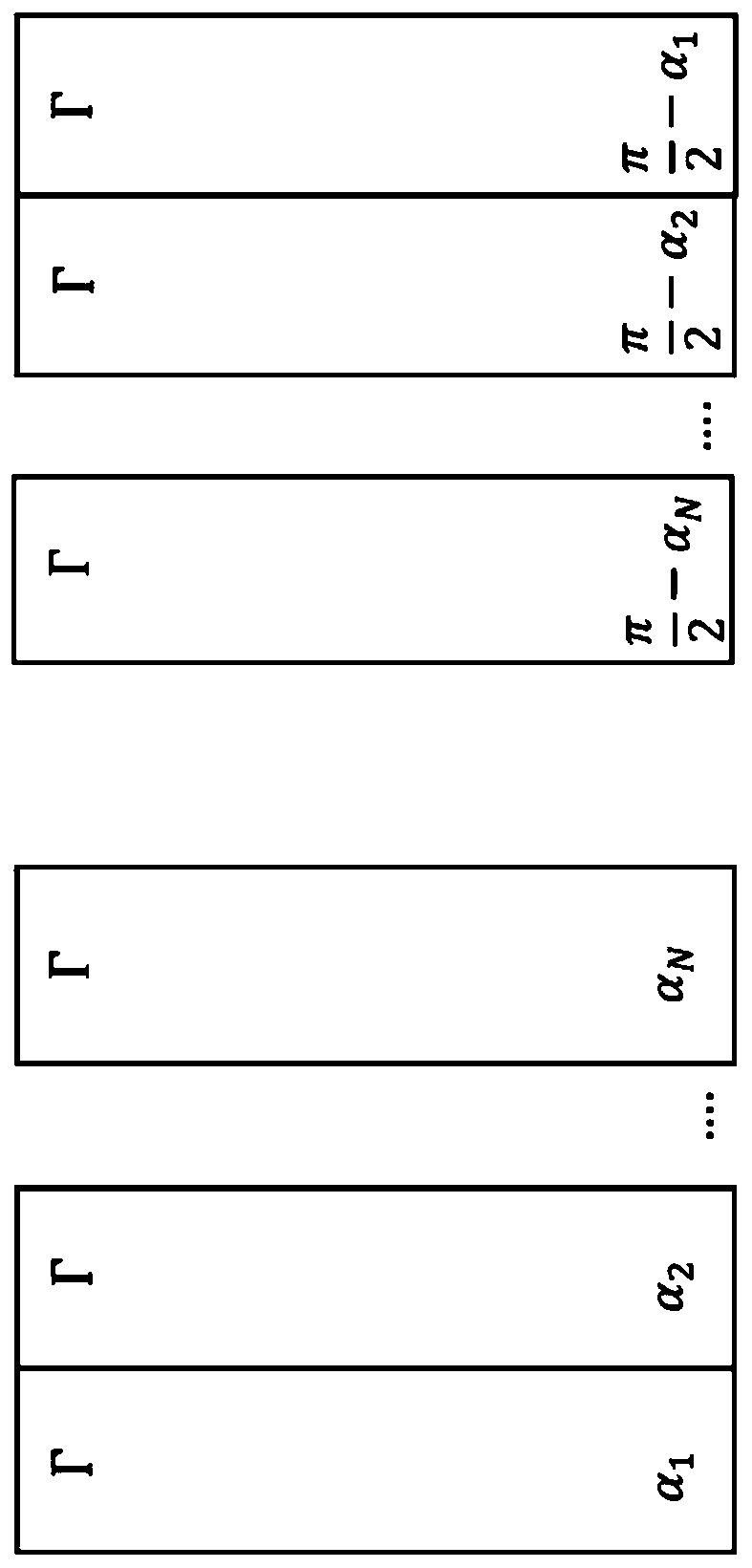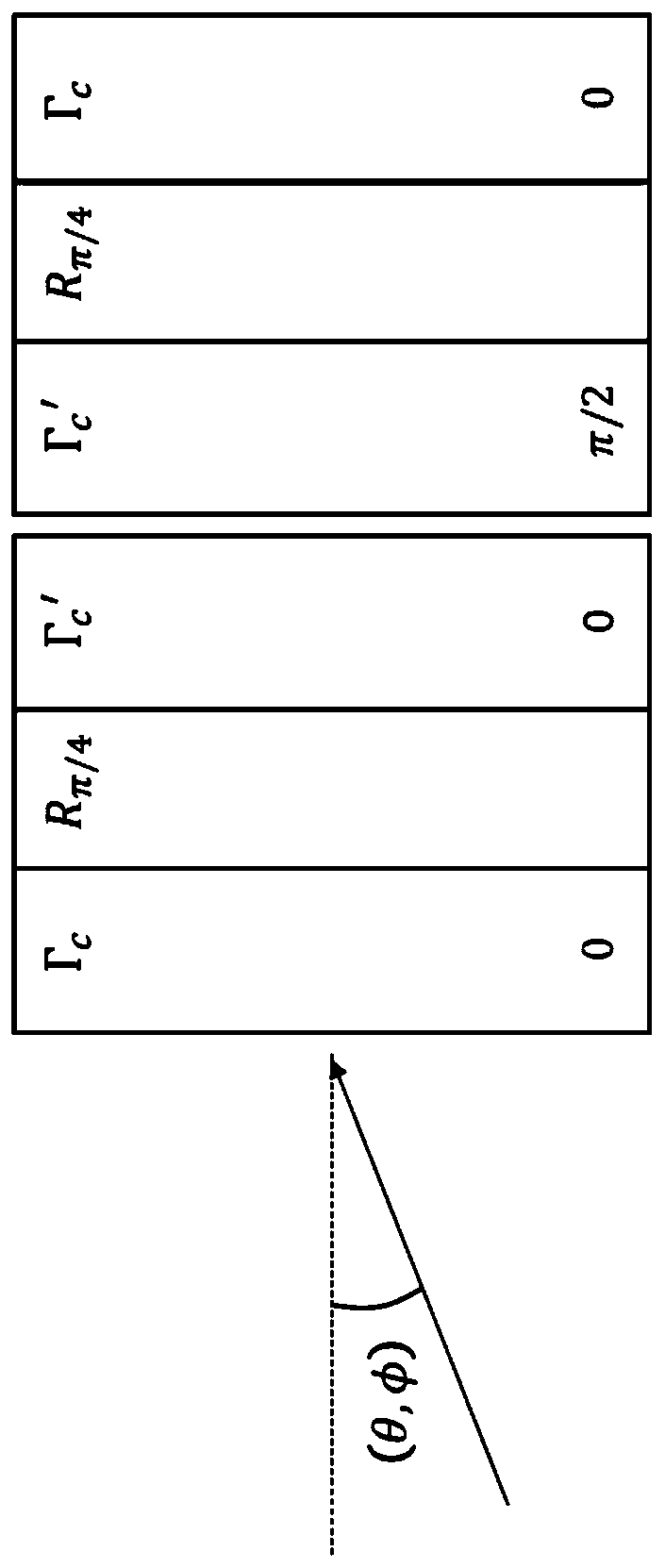Wide-angle compensation of uniaxial retarder stacks
A technology of retarder and stack, applied in the field of wide-angle compensation of single-axis retarder stack
- Summary
- Abstract
- Description
- Claims
- Application Information
AI Technical Summary
Problems solved by technology
Method used
Image
Examples
example 1
[0046] Example 1: 14-layer filter using inverse order reflection compensation around 45°
[0047] Use computer models to illustrate the relationship with Γ c and Γ c 'related R th C relative proportion. A 14-layer green-magenta filter with the design of Table 1, each layer having a 1.5-wave retardation at 530 nm, was used. Therefore, for each stack, R e C The value of is 5565nm at 530nm. Optimal performance at 25° incidence at 0 / 90° azimuth was obtained using cross-A plates, each with a retardation of 2100 nm. This should be the same as Γ c ' is a somewhat close match, indicating that Γ c About 3465nm. Each stack is then swapped end-to-end. Although the central delay should now be Γ c The delay of , but the rotation (which is the reciprocal) is basically preserved. After repeated optimization, the selected compensator value was 4200nm. Adding the two optimized compensation values indicates that the total R e C is about 6300nm, which is fairly close to the abo...
example 2
[0048] Example 2: 8-layer filter using reverse order reflection compensation around 45°
[0049] Figures 4 and 5 show the design of Table 1 with 8 layers at various angles of incidence (0-25°) between crossed ideal polarizers. Each layer has a 1.5-wave retardation at 540nm, giving a composite retardation of 3240nm for each stack. Figure 4a An uncompensated design along ±45° azimuth is shown, where the performance of both the passband and stopband is relatively stable. This indicates the stability of the non-perpendicularity of the rotational and composite optical axes, and the lack of Γ in this azimuth c 'Impact. Figure 4b An uncompensated design for 0 / 90° azimuth is shown. Note that the composite optical axis keeps the wavelength stable, so the unconverted band does not vary much, so there is little leakage in the blue / red part of the spectrum. As the green performance decreases with angle of incidence, it takes the form of a loss in peak transmittance. There is no app...
PUM
 Login to View More
Login to View More Abstract
Description
Claims
Application Information
 Login to View More
Login to View More - R&D
- Intellectual Property
- Life Sciences
- Materials
- Tech Scout
- Unparalleled Data Quality
- Higher Quality Content
- 60% Fewer Hallucinations
Browse by: Latest US Patents, China's latest patents, Technical Efficacy Thesaurus, Application Domain, Technology Topic, Popular Technical Reports.
© 2025 PatSnap. All rights reserved.Legal|Privacy policy|Modern Slavery Act Transparency Statement|Sitemap|About US| Contact US: help@patsnap.com



